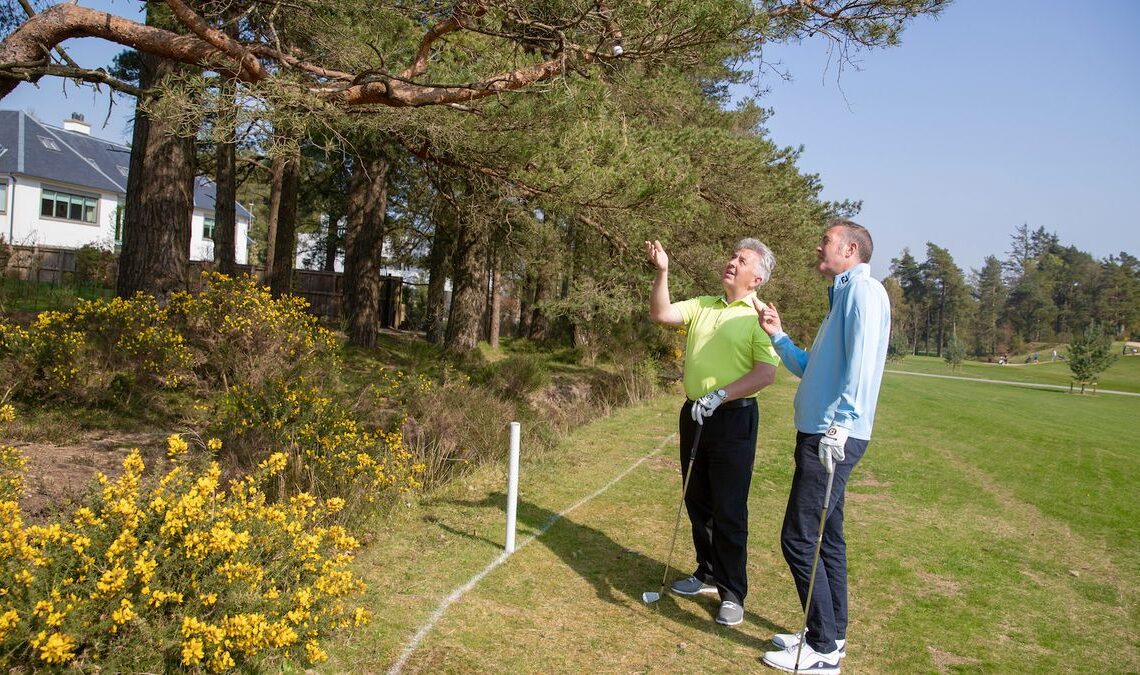It may not happen to most golfers that often, but golf balls do sometimes decide not to fall back to earth when they clatter into a tree, and rather remain lodged in the branches or foliage potentially some way above the ground. So, what are your options when this happens?
Well, after someone has inevitably suggested that you need a ‘tree-iron’, the first thing to say is that if you are unable to positively identify a ball you see up in the branches as yours, your ball will be deemed lost and you will have to go back to where you last played from under penalty of stroke and distance.
If the ball is impossible to retrieve and you’re unable to identify it as yours, it is lost under the Rules
(Image credit: Getty Images)
Should you decide to scale the tree, you need to be careful not to move your ball and thus incur a penalty stroke under Rule 9.4. However, clarification 9.4a/1 confirms what happens if you decide to climb the tree to try and identify a ball you believe to be yours and then move the ball in the process:
“In searching for their ball, a player sees a ball lying in a tree but cannot identify it. The player climbs the tree in an attempt to identify the ball and in doing so accidentally dislodges the ball from the tree. The ball is identified as the player’s ball. In this case, since the ball was accidentally moved in taking reasonable actions to identify it, there is no penalty for moving the ball (Rule 7.4). The player must replace the ball or may directly use a relief Rule (such as Rule 19 – unplayable ball).”
Additionally, if you declare in advance that you are going to proceed under the unplayable ball Rule 19, you may then shake the tree to try and dislodge a ball you believe to be yours. That clarification goes on to say:
“A player’s ball has not yet been found but is believed to be lodged in a tree in the general area. The player makes it clear that if the ball is found they will take unplayable ball relief under Rule 19. The player shakes the tree; the ball falls down and is identified by the player within three minutes of starting the search. The player may now take relief under Rule 19 (unplayable ball) adding only the one penalty stroke prescribed by that Rule with no additional penalty for causing the ball to move. If not known, the player must estimate the spot where the ball lay in the tree when applying Rule 19.
Jerry Kelly and a Rules official were able to identify his ball using a camera in the 2011 Honda Classic
(Image…
..
Click Here to Read the Full Original Article at Golf Monthly…
